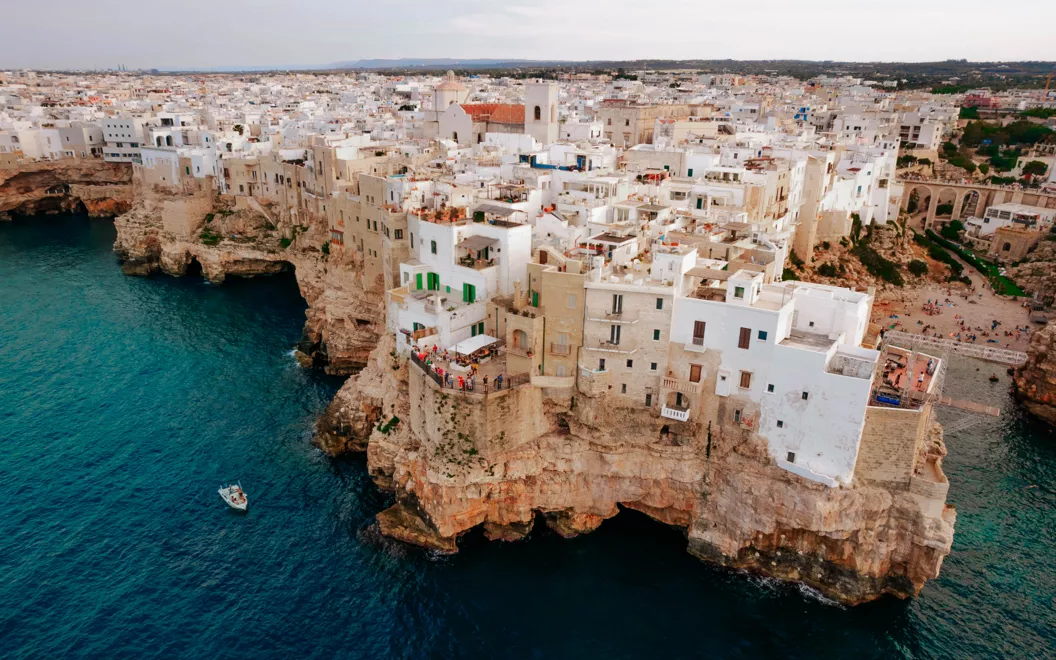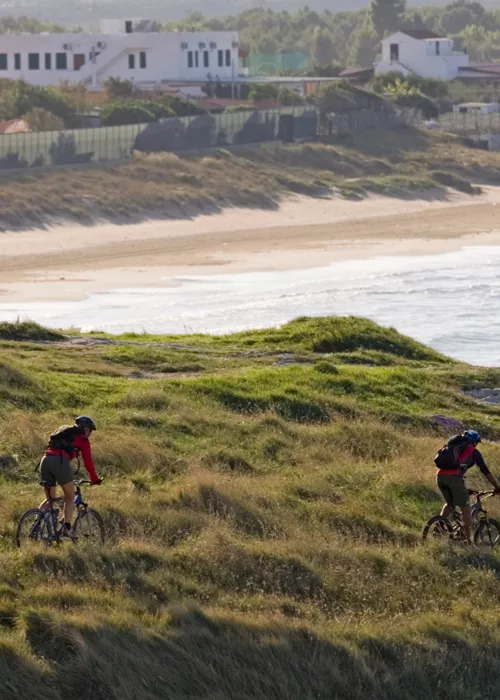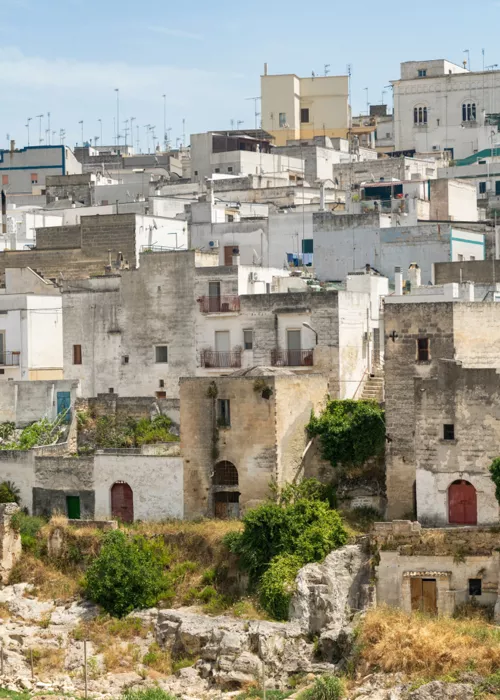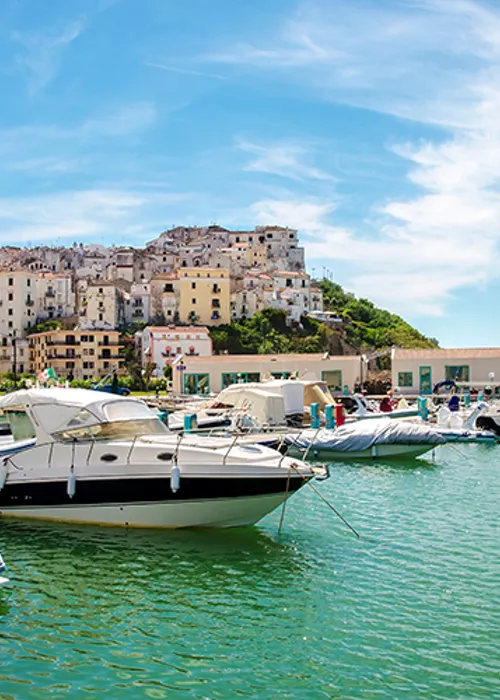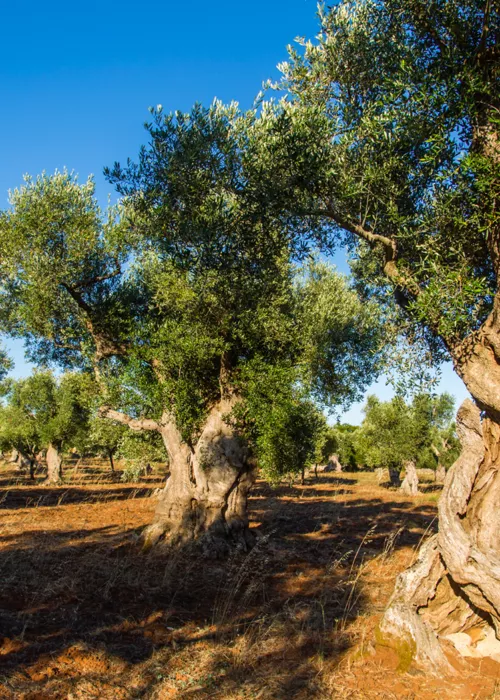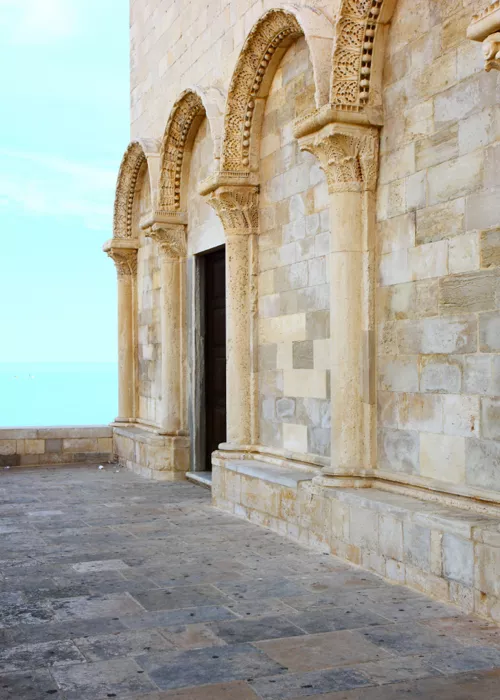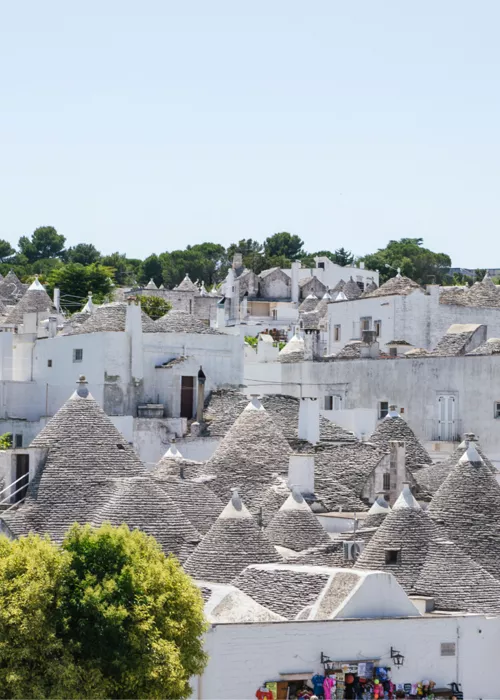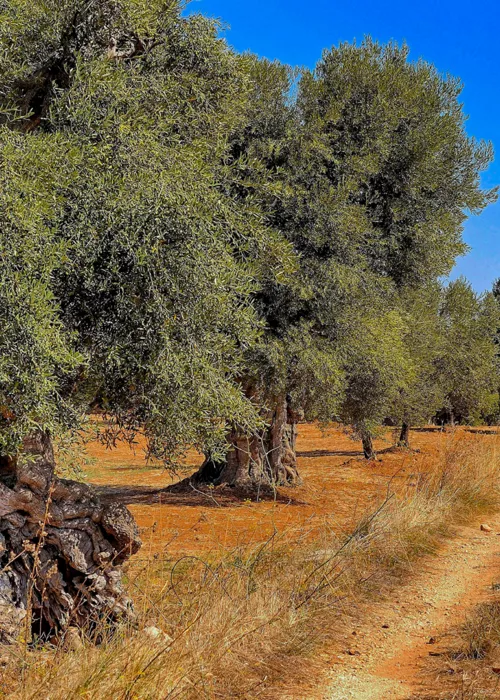Polignano’s historic centre (and a poetic treasure hunt)

Our itinerary starts from Polignano’s historic district. Access is through the 16th-century Arco Marchesale, or Porta Grande, once the only entrance to the fortified city and still overlooked by the picturesque remains of the 15th-century church of San Giuseppe. Beyond the arch, you will find the Mother church, dedicated to Our Lady of the Assumption.
Wander through the maze of stone-paved streets and cross what was once the Jewish ghetto, along Via Giudea, where Purgatory Church and St Stephen's Church are located. The Pino Pascali Museum, the only permanent museum of contemporary art in Apulia, is located in the former slaughterhouse.
Next, lose yourself in the many craft shops, typical ice-cream parlours, patisseries and romantic restaurants overlooking the sea. But keep your eyes peeled while strolling, because a real treasure hunt begins for you. In fact, Polignano is also called the town of poetry: up and down, on walls, on the steps of the historic centre, even on doors, you will find, hand-painted, verses and words of famous poets and writers. They are the work of local street artist, Guido Lupori, also known as Guido the Flâneur, who had a special mission: “bring young people closer to the beauty of literature.”

Leaving the centre behind, it is time to go 200 metres further on to experience the Apulian dream admiring Polignano’s Caves. In fact, under the jagged wall of crags visible only from the sea, the cliffs around Polignano conceal a series of sea caves waiting to be discovered, where the sea plays with the sunlight producing spectacular refraction phenomena.
But how to visit the Polignano a Mare Caves? Hire a boat, canoe or a SUP: some, closer to the village, you can even swim to. Among the best known, don't miss Grotta della Rondinella, Grotta Palazzese, the exclusive cave restaurant in Polignano a Mare, Grotta dell'Arcivescovado and Grotta delle Monache.
Ponte Borbonico on Lama Monachile, silent lookout

Our itinerary continues 400 metres further on and 15 metres above sea level: on Ponte Borbonico of Lama Monachile built by the important family in the early decades of the 19th century. It is one of Polignano’s most panoramic points, especially at sunset, when the horizon turns pink, for a perfect picture.
From here, the view sweeps from the village to the picturesque cove below, which can be reached by descending a convenient flight of steps. Its imposing structure also overlooks the ancient Via Traiana, which once connected Benevento to Brindisi, crossed by a smaller, ancient Roman bridge, made of tuff blocks and with a single span, recently restored.
Lama Monachile, the beach of desire

From Polignano's Bourbon bridge, with just a one-minute walk, the route leads to the beach of Lama Monachile, the beach of desire. Located in an ancient riverbed, which once flowed into the Adriatic and is now dry, inside one of the so-called ‘lame’, a kind of fjord that cuts through the high wall of crags, Lama Monachile, also known as Cala Porto, is the most famous beach in Polignano and perhaps in Puglia.
Due to its cosy location and proximity to the old town, easily reached via the Roman bridge, it is rather crowded in the summer season. If you plan on spending a few hours there, it is best to arrive early in the morning. However, if you move away from the centre, especially in a northerly direction, you will find other less crowded but still beautiful sandy beaches.
The Domenico Modugno viewpoint: a tribute to the Maestro

From literature to music. Having said goodbye to the beautiful Lama Monachile, the itinerary ends after a two-minute walk overlooking the sea. You cannot visit Polignano without paying homage to one of its most illustrious citizens, Domenico Modugno, considered the father of Italian singer-songwriters.
The statue of Modugno, dedicated to him by the city, is located right on Polignano’s seafront, bearing his name: made of bronze, it is three metres high, created by sculptor Hermann Mejer and the object of a continuous pilgrimage. It is said that if you stop for a few moments to contemplate the sight of the Maestro framed by Polignano’s infinite sky – the singer standing, his jacket and hair waving in the wind, his arms outstretched in a sort of symbolic embrace of the city – it almost as if you can still hear him singing: Volare, oh oh.

